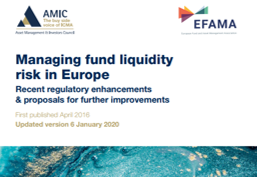As the European Union’s financial system has become more complex, it has also opened the door to new risks of money laundering and terrorist financing. EFAMA supports the new regulatory package proposed by the Commission on 20 July 2021, believing this initiative will make strides in ensuring that no loopholes or weak links in the internal market allow criminals to use the EU to launder the proceeds of their illicit activities.
Please download the PDF file above for more details.

































